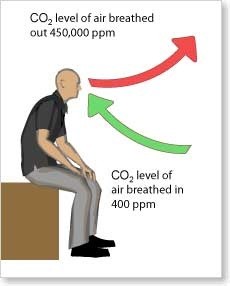
Understanding C02 Emissions in Buildings
8/22/2013
When is there too much CO2 in a building? Let’s take a look at the air quality inside a building. First, we must consider the carbon dioxide content CO2 of the air. The presence of carbon dioxide inside buildings is largely due to human respiration, because the metabolism of cells converts oxygen to CO2 when it is breathed out. A person at rest or a low level of activity will produce 0.7 g CO2 every minute.
The diagram shows some concentrations of CO2 in ppm and their effects:
- The concentration of CO2 in the external air is almost 400 ppm. The comfort threshold of 1000 ppm was proposed by Max von Pettenkofer.
- Experiments have shown that levels above 1500 ppm lead to headaches, tiredness, dizziness and reduced concentration.
- The maximum permissible concentration of CO2Â in indoors air in the workplace is 5000 ppm.
- Besides this to some extent dramatic impact on people, there is also a correlation between CO2- levels in indoors air and the intensity of human breath odors.
High-efficient balanced mechanical ventilation brings in a continuous stream of fresh air ensuring that optimal air quality is never hampered by CO2 emissions. High-efficient HRVs/ERVs are designed to bring in a continuous stream of fresh air ensuring that optimal air quality is never hampered by CO2 emissions. High-efficient HRVs/ERVs remove stale air and simply replaces it with an equal volume of fresh air. Next we will examine how high-efficient HRVs/ERVs regulate indoor moisture.
